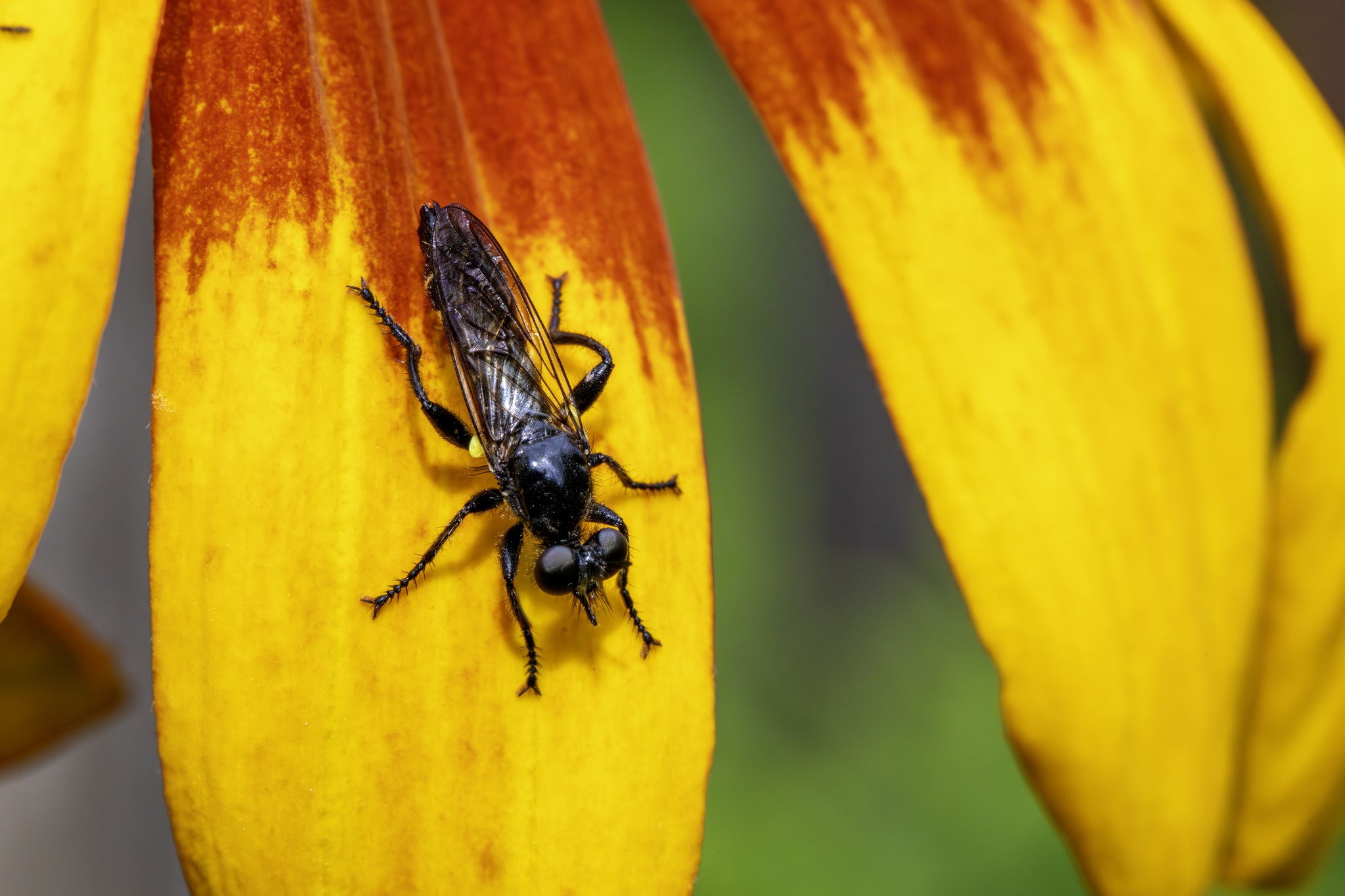The Violet Black-legged Robberfly (Dioctria atricapilla) is an intriguing species of predatory fly known for its striking appearance and predatory behavior. Here’s a detailed overview of this fascinating insect:
Description
- Size: Dioctria atricapilla is a medium-sized robberfly, measuring about 8-12 millimeters in length.
- Appearance:
- Body: The body is slender and elongated, predominantly black with a subtle violet sheen.
- Legs: The legs are black, contributing to its common name.
- Wings: The wings are clear with a slight smoky tint, held flat over the abdomen when at rest.
- Head: The head features prominent compound eyes and short, bristle-like antennae.
Habitat
- Distribution: This species is found throughout much of Europe, particularly in temperate regions.
- Preferred Environment: Dioctria atricapilla favors open woodlands, forest edges, meadows, and hedgerows. They are often seen perching on vegetation in sunny spots where they hunt for prey.
Behavior and Ecology
- Diet: As a predatory fly, the Violet Black-legged Robberfly preys on other insects. Its diet includes various small flies, beetles, and other soft-bodied arthropods.
- Hunting Strategy: These flies are agile hunters, capturing prey in mid-air with their strong legs. They inject their prey with digestive enzymes to immobilize and digest them before consumption.
- Reproduction: Females lay eggs in soil or decaying vegetation. The larvae are also predatory and develop by feeding on other small invertebrates within their substrate.
Conservation Status
- Threats: The main threats to Dioctria atricapilla include habitat loss due to agricultural expansion, urbanization, and pesticide use, which can reduce prey availability.
- Conservation Efforts: Conservation efforts focus on preserving natural habitats and promoting biodiversity to ensure a healthy population of prey species for the robberflies.
Interesting Facts
- Predatory Role: Robberflies, including Dioctria atricapilla, play a crucial role in controlling insect populations, acting as natural pest control agents.
- Vision: Their large compound eyes provide excellent vision, enabling them to spot and capture prey with remarkable accuracy.
Observing Dioctria atricapilla
- Best Places: To observe these flies, visit sunny, open areas with plenty of vegetation, such as meadows, woodland edges, and hedgerows, particularly during the warmer months.
- Watching Tips: Look for them perching on leaves and stems where they wait for passing prey. Using a magnifying lens or macro photography can help you appreciate their intricate details and behavior.
The Violet Black-legged Robberfly (Dioctria atricapilla) is a fascinating predator with its striking appearance and effective hunting skills. Observing these flies provides insight into the complex and diverse world of predatory insects.
Visited 480 times, 23 visit(s) today
Views: 447
Subscribe to the newsletter:
